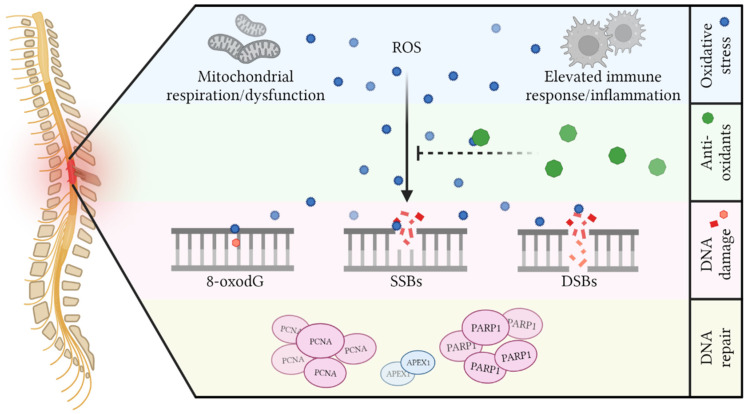Figure 5.
Oxidative DNA damage after SCI results from massive oxidative stress with limited antioxidative capacities. Mitochondrial respiration and ensuing dysfunction, together with elevated immune responses and excessive inflammation, are thought to be the primary producers of ROS in the spinal cord following injury. Due to the intrinsic limited presence and injury-induced loss of antioxidants, ROS can attack the DNA of cells, giving rise to 8-oxodG, single-strand breaks (SSBs), and double-strand breaks (DSBs). Evidence indicates that DNA damage response factors such as PCNA and PARP1 are upregulated, whereas APEX1 is downregulated.

